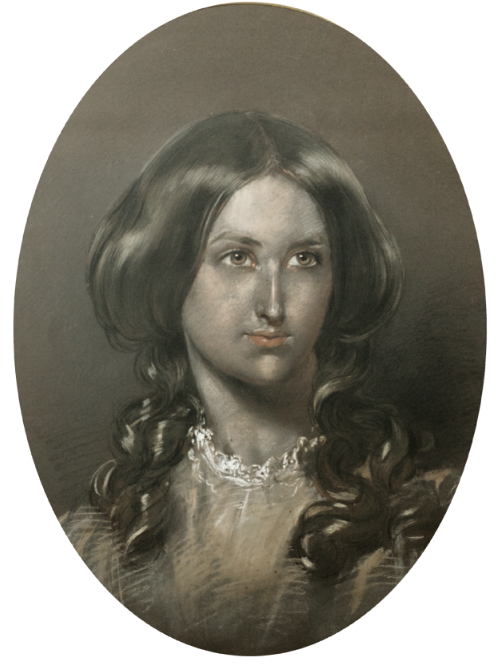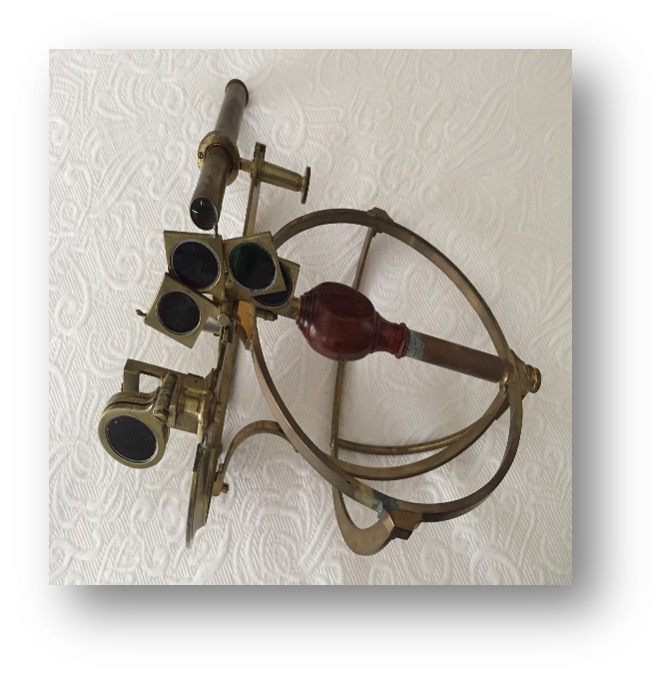Janet Taylor 1804 – 1870
(née Jane Ann Ionn)
Author, mathematician, teacher, inventor, compass adjuster, chart seller.
13 May 1804 – 26 January 1870

Janet Taylor – a Tribute by John S. Croucher
Janet Taylor was born ‘Jane Ann Ionn’ on 13 May 1804. She was the daughter of Jane Ionn and her husband the Reverend Peter Ionn. Peter was the curate and schoolmaster at the Free Grammar School in Wolsingham in County Durham, England, where he also taught, navigation. When Jane Ann’s mother died in May 1811, two months after giving birth to her sixth child Frederick, Jane was six years old.
When Jane was nine years old, a scholarship became available for girls aged 14 and over to take their place at The Royal School for Embroidering Females. This had been established under the patronage of Queen Charlotte. Despite her young age, and with the endorsement of the Member of Parliament for Durham City, Michael Angelo Taylor, Jane Ann was accepted as a pupil. She remained there until the death of the Queen on 17 November 1818 when the school was closed.
On 2 May 1821, Jane Ann’s father Peter died suddenly when Jane was 16 years old and she went to live with her brother, Mathew, who had opened a linen draper’s shop at 44 Oxford Street in London. At the age of seventeen, Jane Ann obtained a position as governess to Reverend John Huntley in the small town of Kimbolton, about 25 miles north of Ampthill.
Jane Ann knew that she needed a husband to be ‘respectable’. On 30 January 1830, at 26, Jane Ann married 41-year-old George Taylor at the British Embassy in The Hague, The Netherlands. George was a widower with 3 children, a former naval man during the Napoleonic wars and now a publican. He was also a ‘dissenter’, brought up outside the Church of England. On their marriage, George changed his name to ‘George Taylor’, and she became ‘Mrs Janet Taylor’. The couple set up residence at 6 East Street, Red Lion Square, near Oxford Street in London.
Red Lion Square was still a little walk from the Thames River and the London Docks, further east. Jane wanted to be in The Minories but it would take a few years before they got there. In 1835, they moved to 103 Minories. In the meantime, Mrs Taylor established herself as a teacher and writer on navigation.
Her entry into publishing began in 1833, at the age of 29, and she went on to produce a number of major works of importance to the maritime community; most went into many editions. There were seven editions of her first book, Luni-Solar and Horary Tables (or Lunar Tables) alone, appearing between 1833 and 1854. Her Principles of Navigation Simplified: with Luni-Solar and Horary Tables, first published in 1834, had three editions, while An Epitome of Navigation and Nautical Astronomy went to twelve editions between 1842 and 1859. Her Planisphere of the Fixed Stars with Book of Directions, with its beautiful plates of star charts, was first published in 1846 and reached its sixth edition in 1863. Each was allowed to be dedicated to a member of the royal family – King William IV, whose mother had sponsored Janet’s scholarship as a child; Queen Adelaide; the Duchess of Kent (then Princess Victoria’s mother).
In March 1834, ‘Mrs Janet Taylor of East Street, Red Lion Square, Middlesex,’ lodged an application for a British patent for ‘A Mariner’s Calculator’, claiming ‘improvements in instruments for measuring angles and distances, applicable to nautical and other purposes’. The application, No. 658, was granted in September 1834. Between 1617 and 1852 only 79 patents were awarded in the category ‘Compasses and Nautical Instruments’, the patents were awarded to renowned leaders in the field such as John Hadley in 1734, Edward Troughton in 1788 and Edward Dent in 1844. But quite intriguing is that, during this 235-year period, only one of these was to a woman: thirty-year-old Mrs Janet Taylor.
The ‘Mariner’s Calculator’ was an ingeniously clever concept, combining several nautical instruments into one. Janet delivered a prototype of her new device to the Admiralty for assessment, and it was given to the Admiralty’s Hydrographer, Captain Francis Beaufort. Captain Beaufort’s report in May 1834 was not favourable. It was not that he concluded that it wouldn’t work, but in the ‘clumsy fingers of seamen’, he thought it impractical. He also felt it would encourage slovenliness (perhaps because it would do too much of the hard work).
Although the Mariner’s Calculator was not a success, this meant that it became a rarity. Only one is known to survive and this was sold to a private buyer, at a considerable cost, at Sotheby’s, in 1999. The author had a replica made from Janet’s original patent application and using materials from the era, as shown below.

By 1845 Janet and George had opened a business premises at 104 Minories where she sold a wide range of nautical and mathematical instruments, illustrated by an advertisement in the Mercantile Marine Magazine, October 1854, declaring that the firm manufactured ‘every description of nautical and mathematical instruments’. It was in Minories that Mrs Taylor also ran her ‘nautical academy’, which would continue for over thirty years.
Perhaps the most distinctive of Mrs Taylor’s instruments was the exquisite Prince of Wales ‘quintant’, entered for the Great Exhibition of 1851. It was much more than a working nautical instrument. It was magnificent and flamboyantly ornate. It combined the principal aspirations of the exhibition in one, arts and manufacturing, and the Royal Society that had championed the Great Exhibition. At the centre of the instrument was the Prince of Wales crest, ‘Ich Dien’, ‘I serve’, which was also on the box. It was an elegant, artistic combination of metaphor, allegory and practicality.
The elegance of Mrs Taylor’s creation, however, was lost on the jury. In the section relating to ‘Instruments made in the United Kingdom’, it was simply reported that Janet Taylor had exhibited a sextant ‘intended for show rather than use’ and there was no mention of any award. The Prince himself was only 11 years old but, in time, the instrument was presented to the Royal Family, and, in turn, it came to the National Maritime Museum in May 1936 where it can be seen today.
Mrs Taylor’s contributions to the maritime world also extended to compass-adjusting. She ran a large compass-adjusting business, employing 100 men. Her practice was based on the application of techniques for correcting magnets to counteract the effects of iron on ships’ compasses advocated by the Astronomer Royal, Professor George Airy. Her practical application of, and advocacy for, his technique earned Mrs Taylor the respect of the Astronomer Royal.
Janet Taylor had eight children of whom six survived (she lost a son and a daughter), along with three stepchildren from George’s first marriage. She was a woman who stood up for her beliefs, illustrated by her public clash with the Nautical Magazine which she felt was demeaning her complex mathematical work as she was only ‘one of the fairer sex’. They ultimately backed down and praised her, even bemoaning – in an issue over 100 years after her death – that it was a shame that there were not now more women like her.
The obituary for Janet published in The Athenaeum, on 5 February 1870, just ten days after her death, concluded in saying, ‘Perhaps some surviving relative or friend may be able to throw light on the life and labours of one who was as extraordinary from her acquirements of knowledge as from her social reticence.’ Her biography, Mistress of Science, written by the author some 146 years later, does just that. Janet was my great-great-great-great aunt.
Further reading
Alger, Ken R., 1982. Mrs Janet Taylor – Authoress and Instructress in Navigation and Nautical Astronomy. Fawcett Library Papers No. 6, LLRS Publications.
Croucher, John, 2019. Women of Science: 100 inspirational stories. Stroud: Amberley Publishing.
Croucher, Rosalind & Croucher, John, 2018. Compasses and sinking ships: Mrs Janet Taylor’s contribution in the compass adjusting controversy of mid-nineteenth-century England. International Journal of Maritime History, 30 (2), 234–251.
Croucher, John, 2017. Mrs Janet Taylor – a fascinating chapter in my family’s history. The Manchester Genealogist, 53 (2), 179-182.
Croucher, John, & Croucher, Rosalind, 2017. Mrs Janet Taylor – Mistress of Science. The Log (208), 73-76.
Croucher, John, & Croucher, Rosalind, 2016. ‘Mistress of Science: the remarkable Janet Taylor. Stroud: Amberley Publishing.
Croucher, John, & Croucher, Rosalind, 2012. Mrs Janet Taylor and the Civil List pension claim to recognition by her country. Women’s History Review, 21 (2), 253-280.
Taylor, Janet, 1855. Handbook to the Local Marine Board Examinations for Officers of the British Mercantile Marine Board
Taylor, Janet, 1846. Planisphere of the Fixed Stars with Book of Directions.
Taylor, Janet, 1842. An Epitome of Navigation and Nautical Astronomy.
Taylor, Janet, 1833. Luni-Solar and Horary Tables, 1st edition
Connection to Bloomsbury
When first married, Janet Taylor took up residence at 6 East Street Red Lion Square, near Oxford Street, in Bloomsbury, London. It was from there, at age 29, that she lodged an application for a British patent for her ‘Mariner’s Calculator’, the only woman to be awarded such a patent in the 235-year period between 1617 and 1852.

